If you are designing wireless networks for challenging or mission-critical environments, you need to be doing pre-deployment surveys. These are also known as active, or AP on a Stick surveys.
Where I used to work, predictive design was the status quo, with post-deployment verification. The result: often, teams had to tweak things that the software had predicted incorrectly. Or, we had add more APs to address coverage gaps – costly and annoying.
On the next project, rather than budget for “contingency” (aka going back to fix things that don’t work as expected), we took a portion of that money and allocated it to getting an AP on a Stick survey kit and improving the design process.
There are a few professional solutions out there, but to cut costs even further I began looking into DIY solutions. Shoutout here goes to @NoLANWiFi whose excellent blog post served as the inspiration for this build. It’s 90% the same, apart from minor changes like the battery used.
*Note that we had to order everything from our preferred VAR rather than online sites like Amazon or individual manufacturers – this is the main reason for changes to Nolan’s original design.
The Parts
Impact Folding Wheeled Base Stand, 11′
As the base for the entire kit, you want a high-quality stand that won’t tip over. This sturdy stand folds up and has locking casters, making it perfect for portability and stability.
WiFiStand Version 2 Bracket
You need a way to attach an AP to the stand, and that’s where the Wi-Fi bracket comes in. You could hack something together yourself, but this T-Rail support fits most manufacturer brackets, making mounting a breeze. Check the build section for details on how to actually mount this bracket to the stand itself.
Black Box Network Services CAT6 Retractable Cable
Wi-Fi still needs wires in some places. This retractable CAT6 cable was a cheap and compact solution compared to a thick coiled cable. It’s only 6.5ft though, so if you want to take full advantage of the stand’s 11ft reach, go for something longer.
BXPower 36V 11.6Ah Lithium Ion E-Bike Battery BX3691B
This was the only e-bike battery our VAR was able to source and I have to say I’m super pleased with it. The runtime capacity is enough for an entire day, it mounts easily and securely to the stand, and it’s super compact. Here is the manufacturer site with specs
Transition Networks Unmanaged Hardened 30W PoE+ Injector
I ran into an issue with the PoE adapter originally specced for this build, which has a 9-36VDC input. The 36V battery at 100% charge gives out ~42V. The PoE brick couldn’t handle this and didn’t work until the battery was semi-discharged. The input range on this one is 24-48VDC, so it works great with a solid build quality. Here is the spec sheet.
TRENDnet 5-Port Hardened Industrial Gigabit DIN-Rail Switch
The AP2800/3800 requires an active LAN uplink, and will not initialize properly off of just PoE power. I found this out the hard way, so bought this little industrial switch to get things up and running. In a future build, I would probably get a switch with integrated PoE+ to save even more space and money.
Pelican iM3220 Storm Case with Foam (Black)
I never actually needed to transport the kit outside of our headquarters, but this kit will easily stow away all the components for travel and transport. It’d definitely protect the AP and survey kit if I were to check it as baggage on a flight to the next location to be surveyed.
And last, but not least: a wireless access point. I’ll leave it up to you to decide which AP to put on the stick!
The Build
You need to somehow attach the WiFi Stand to the top of the wheeled base stand. I chose to create a screw-type mount, like Nolan did. Since we had machine shops in our manufacturing plants, I drove over to the nearest facility and dropped off the stand with one of our nicer machinists. The next day, a perfectly drilled & tapped hole had found its way inside the top of the stand. Then it’s just a matter of hacksawing the top off a 1/4-20 bolt, et voilà!
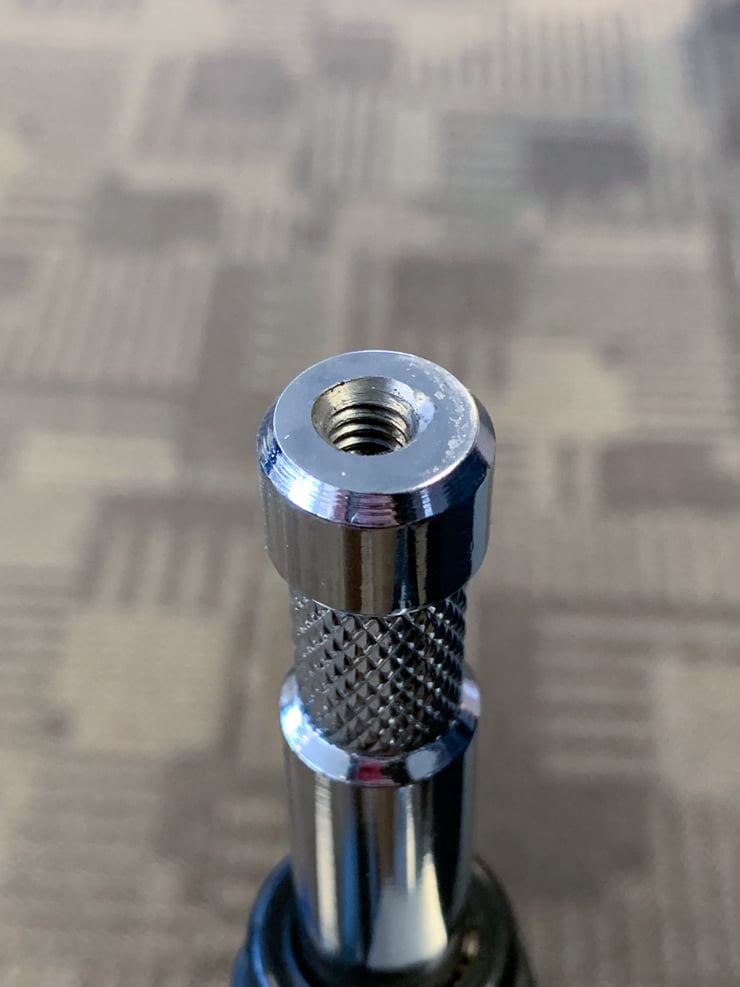
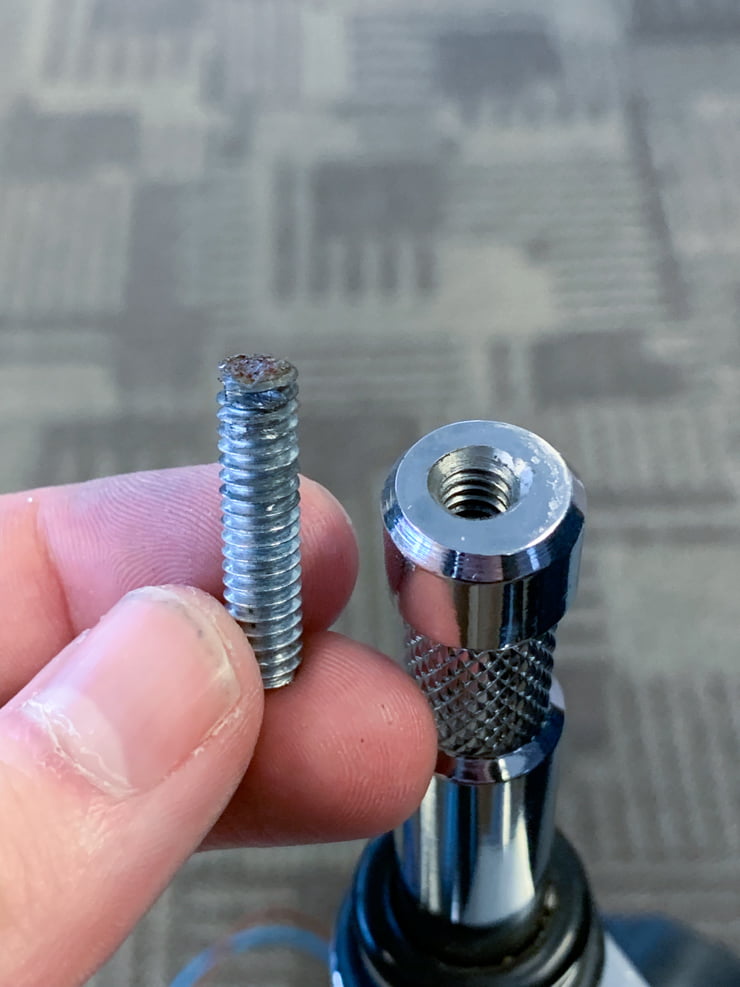
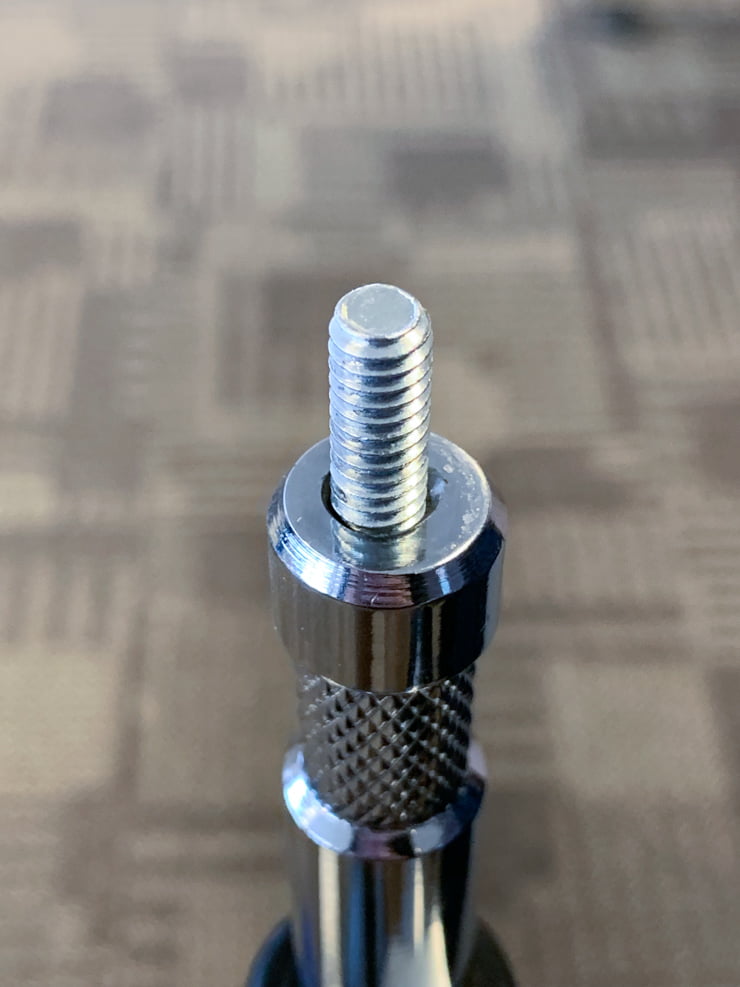
Finally, it’s just a matter of mounting everything to the stand and connecting it all together. If you’re in IT I’m sure you can figure this part out. Just be sure to wire the switch and PoE adapter in parallel so they get the same battery voltage. I used the battery and its secure pole mount as a base to sit everything on top of, securing the other DIN rail mounts with zipties to the stand.
Here are some pictures of the finished product:
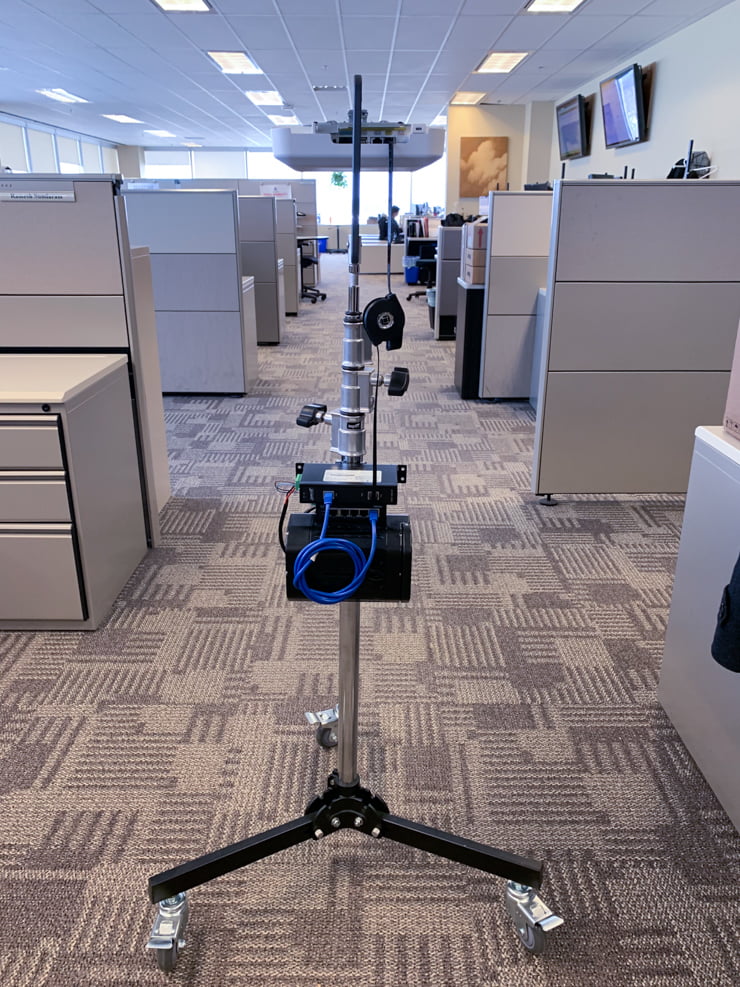
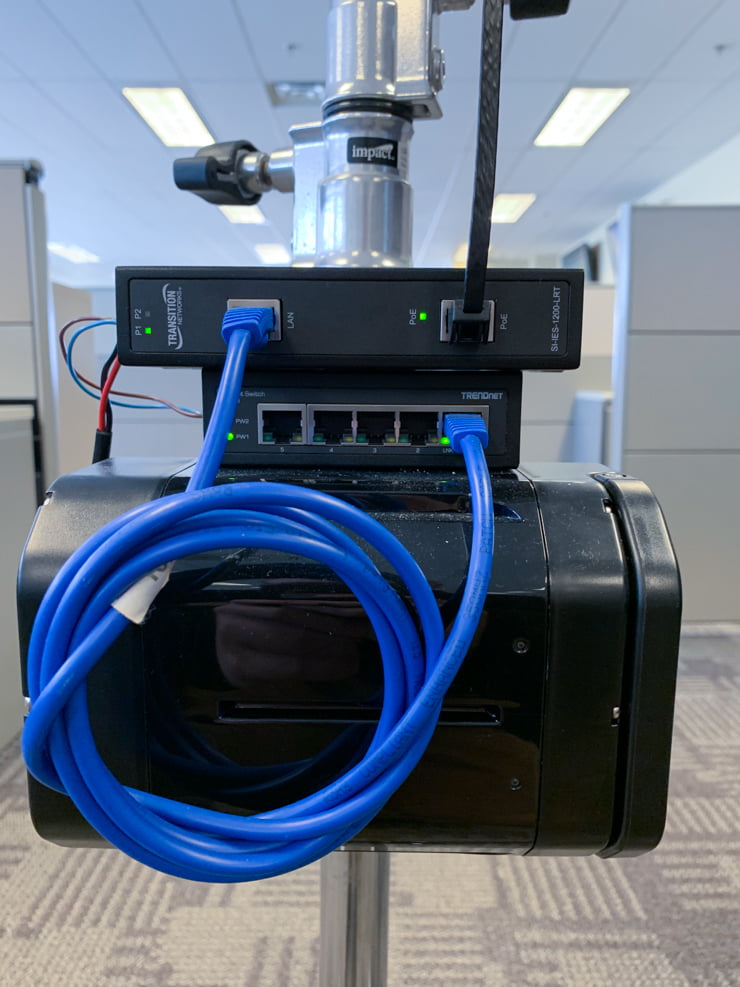
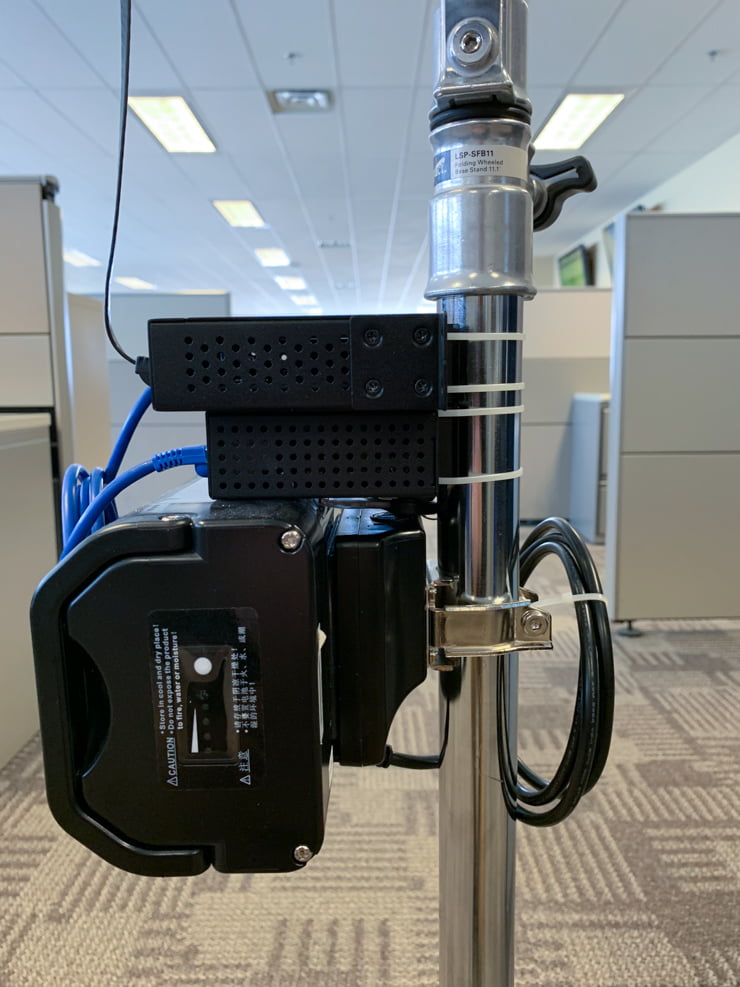
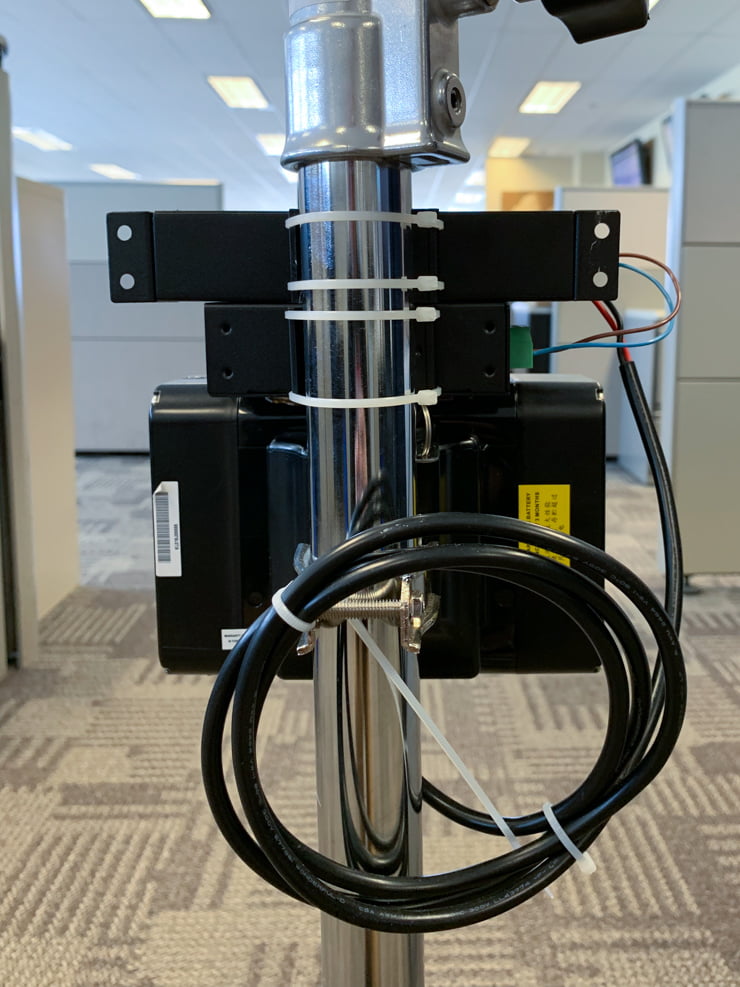
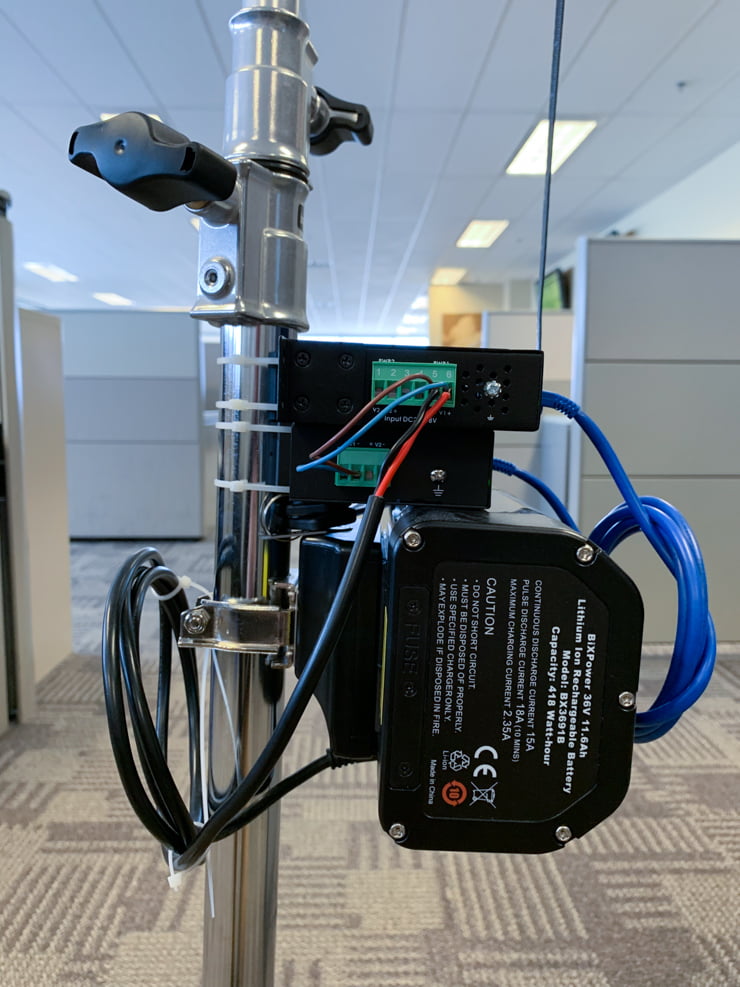
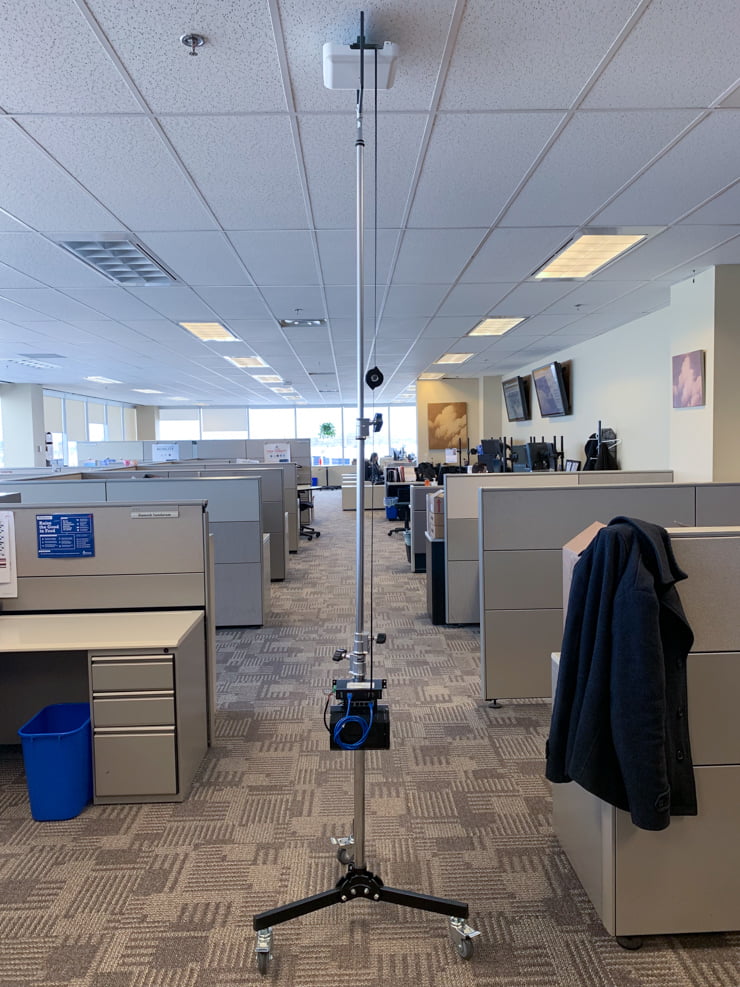
Hope this helps you build an AP on a Stick survey kit, and in your mission to create the best possible WiFi networks. Leave any questions below, and happy surveying!













D you have a video shows how to use it?
what is your price?
Hey Mark!
Unfortunately I don’t have a video of this exact AP on a stick kit in action, but you could give these a view:
How to do ‘AP on a Stick’ model survey in Ekahau
Pre-Deployment Site Survey – “AP on a Stick”
I also don’t have a fully assembled price, but there are links to Amazon or another retailer for each product I’ve listed.
Hope this helps!
We can use POE+ switch only and power injector is not needed, correct me if I am wrong. How about 10 meter Stand as in plants and warehouse the height is always more than 9 meters where you mount the AP.
Hi Arun,
Thanks for your comment! Absolutely, yes you could use an integrated PoE+ switch (I mentioned this in the article) – although at the time of writing and building this AP on a stick kit, I had trouble finding one that both accepted 36V DC power AND supplied PoE+.
Looking at what’s out there now, I managed to find this little PoE+ switch which might work – although it’s specced for 48-56VDC input, and the battery I used only goes up to 42V fully charged.
If you find one that’s suitable, let me know 🙂
As for a taller stand, I think it would be a little unstable to go over 11′. When dealing with extremely high ceilings (20′ and above) we usually asked plant maintenance departments for use or rental of a SkyJack/scissor lift. They usually have one for changing lightbulbs and other ceiling-related maintenance.
The kit is super portable and easily fits on the lift platform, along with the operator. That being said, with high ceilings you’d probably be considering directional antennas, which gets complicated to say the least when trying to do an AP on a stick survey. Hopefully the operator/helper has a steady hand to hold the antenna 🙂
Hope this helps!
Hi Rob,
I use a poe+ switch and a simple “boost” converter to take the battery voltage (even 12V) up to 48V. There are a few options on Amazon depending on whether you want a case or not, (maybe you can 3d print one). You’ll need to cobble up the power input / output cables but its usually easy enough.
Great setup though! I like the retractable ethernet cable!
Robert we have developed one stand which is of 6 meters and our next target is of 9 meters and same is in production phase (it’s full in SS material).. and as far as active components are concerned remains the same.
Hi Rob. Love the setup. I am looking at getting the same Pelican Case for mine. Did you get the foam insert? If so, how did you get about cutting it to fit your kit?
Hey Brett! Thanks for the comment.
When you say “get the foam insert”, what do you mean? As far as I remember, the case came with a foam insert already. Is there an extra insert you’re referring to?
As far as the built-in foam insert, I personally never ended up cutting or using it (or traveling with the case itself, for that matter). The survey kit generally stayed assembled, and we stored it in an upright position to save time and hassle of dis/assembly. It seemed like an X-Acto knife would have done the job, though.
Sorry for not having more details, hope that helps in some way!
So, I just did some research into this, and it looks like another major customer for these type of cases is gun owners. Lots of forums and videos detailing how to cut the foam insert to fit pretty much any shape, ranging from hot wire, to a turkey cutter:
https://youtu.be/NYBhNhumUfQ?t=708
Good luck!
Hi Robert, thank you for the great DIY Tutorial! Awesome, i was looking for a DIY AP stick. My question is, whit what Software or to where do you transfer the AP Stick information? Do you work whit a Software or do you just measure whit a third-party APP or something like that the Signal?
Thanks from Zuerich.
Daniel
Hi Daniel! Great questions. The software I have the most experience with is Ekahau Site Survey (seems to have been renamed Ekahau Pro)
You can find it here: https://www.ekahau.com/products/ekahau-connect/pro/